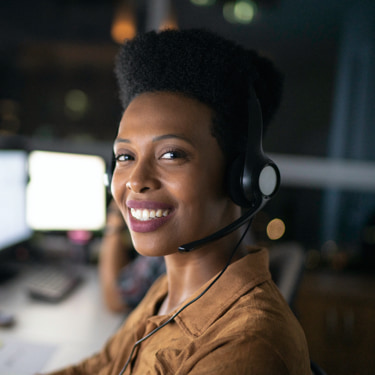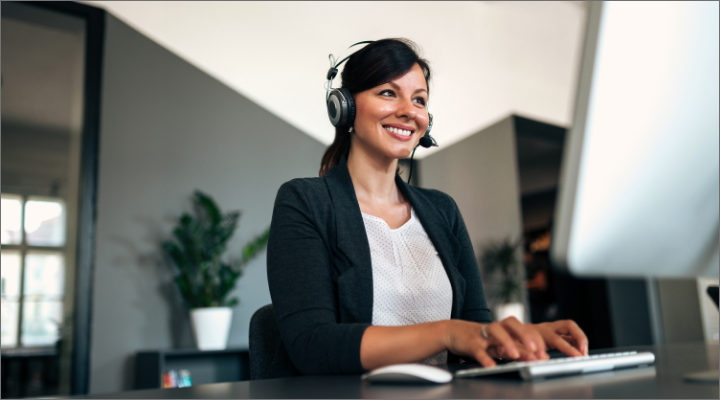All Categories
Featured
Table of Contents
What Is The Best Automated Business Phone Answering System In The World
This gadget and its successors were designed by Sava Jacobson, an electrical engineer with a personal consulting company. While early answering makers used magnetic tape innovation, the majority of modern equipment utilizes solid state memory storage; some gadgets utilize a mix of both, with a solid-state circuit for the outgoing message and a cassette for the incoming messages.
"toll saving" listed below) (phone call answering). This is useful if the owner is evaluating calls and does not want to speak to all callers. In any case after going, the calling celebration must be notified about the call having been addressed (in many cases this starts the charging), either by some remark of the operator, or by some welcoming message of the TAD, or addressed to non-human callers (e.
This holds specifically for the TADs with digitally kept welcoming messages or for earlier makers (before the rise of microcassettes) with an unique unlimited loop tape, separate from a second cassette, devoted to recording. There have actually been answer-only devices without any recording abilities, where the greeting message had to notify callers of a state of present unattainability, or e (business call answering service).
How Do I Choose A Phone Answering Service - Intelligent Office Service?

about schedule hours. In tape-recording Little bits the greeting generally includes an invite to leave a message "after the beep". An answering device that utilizes a microcassette to tape messages On a dual-cassette answerphone, there is an outgoing cassette, which after the specified variety of rings plays a pre-recorded message to the caller.

Single-cassette answering machines consist of the outbound message at the beginning of the tape and inbound messages on the staying space. They initially play the announcement, then fast-forward to the next readily available space for recording, then tape the caller's message. If there are numerous previous messages, fast-forwarding through them can trigger a substantial delay.
This beep is frequently described in the greeting message, requesting that the caller leave a message "after the beep". Littles with digital storage for the taped messages do disappoint this delay, obviously. A TAD may provide a remote control center, where the answerphone owner can ring the house number and, by entering a code on the remote telephone's keypad, can listen to recorded messages, or delete them, even when away from house.
Who Has The Best Answering Services?

Consequently the maker increases the number of rings after which it responds to the call (generally by 2, leading to 4 rings), if no unread messages are currently kept, however responses after the set number of rings (typically two) if there are unread messages. This enables the owner to discover whether there are messages waiting; if there are none, the owner can hang up the phone on the, e.
Some devices also enable themselves to be from another location activated, if they have actually been switched off, by calling and letting the phone ring a specific large number of times (generally 10-15). Some provider abandon calls currently after a smaller variety of rings, making remote activation impossible. In the early days of Littles a special transmitter for DTMF tones (dual-tone multi-frequency signalling) was regionally required for remote control, because the previously utilized pulse dialling is not apt to convey appropriate signalling along an active connection, and the dual-tone multi-frequency signalling was implemented step-by-step.
Any inbound call is not identifiable with regard to these homes in advance of going "off hook" by the terminal equipment. So after going off hook the calls should be switched to suitable devices and only the voice-type is instantly accessible to a human, but perhaps, nevertheless should be routed to a TAD (e.
Is It Worth Paying For Phone Call Answering Service?
What if I told you that you do not need to really get your device when addressing a client call? Another person will. So hassle-free, right? Responding to phone calls doesn't require somebody to be on the other end of the line. Efficient automated phone systems can do the technique just as effectively as a live agent and sometimes even better.
An automated answering service or interactive voice response system is a phone system that interacts with callers without a live individual on the line - business call answering service. When companies use this innovation, clients can get the answer to a concern about your business simply by using interactions set up on a pre-programmed call circulation.
Although live operators upgrade the customer care experience, numerous calls do not need human interaction. A simple taped message or instructions on how a client can retrieve a piece of information usually fixes a caller's instant need - virtual telephone answering service. Automated answering services are a basic and effective way to direct inbound calls to the best person.
Which Is The Best Melbourne Telephone Answering Service : Virtual Reception Company
Notification that when you call a business, either for support or product questions, the first thing you will hear is a pre-recorded voice greeting and a series of options like press 1 for customer service, press 2 for inquiries, and so on. The pre-recorded options branch off to other choices depending upon the customer's choice.
The phone tree system assists direct callers to the ideal person or department utilizing the keypad on a mobile phone. In some instances, callers can use their voices. It deserves keeping in mind that auto-attendant alternatives aren't limited to the ten numbers on a phone's keypad. As soon as the caller has actually picked their very first option, you can develop a multi-level auto-attendant that uses sub-menus to direct the caller to the best type of assistance.
The caller does not need to interact with an individual if the auto-attendant phone system can handle their issue. The automatic service can route callers to a staff member if they reach a "dead end" and need support from a live agent. It is pricey to hire an operator or executive assistant.
Which Is The Best What Is An Answering Service? Plan
Automated answering services, on the other hand, are considerably less costly and supply substantial expense savings at approximately $200-$420/month. Even if you don't have dedicated personnel to handle call routing and management, an automated answering service improves performance by enabling your team to concentrate on their strengths so they can more effectively spend their time on the phone.
A sales lead routed to customer support is a lost shot. If a consumer who has product concerns reaches the incorrect department or receives insufficient answers from well-meaning workers who are less trained to deal with a specific type of concern, it can be a reason for frustration and frustration. An automatic answering system can minimize the variety of misrouted calls, thereby helping your staff members make better use of their phone time while freeing up time in their calendar for other jobs.
With Automated Answering Systems, you can create a tailored experience for both your personnel and your callers. Make a recording of your primary greeting, and just upgrade it frequently to reflect what is going on in your company. You can develop as lots of departments or menu alternatives as you want.
Latest Posts
Detailed Call Answering Service Near Me – Melbourne
Proven Hospitality Answering Service ( Hunter)
Dental Answering Service Near Me – Joondalup